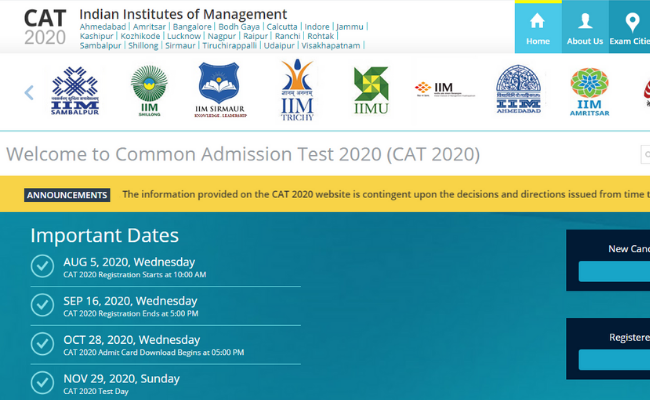
This Sunday is the day you have marked in your calendar as the D-day for the catwalk.
The CAT is the numero uno of all entrance tests for aspirants pursuing graduation in management. No other test in India hogs the limelight as much as the CAT.
The reason most B-schools across the country accept the CAT score, leave a few who run their house tests like XAT, NMAT, or SNAP. Besides, the IIMs who conduct the CAT use only the CAT score. And an IIM admission is the holy grail of the MBA degree in India.
Those of you who will be taking the CAT this year are almost ready to bell the CAT. But you might yet look for that final kick to score a goal. Without getting tense, look for quick revision of the sections.
Experts have suggested that a calm mind is the best one to win any competition. Eat healthily and sleep well. Be smart and stay on top.
Those who have scored 99 and 100 percentiles in previous CAT’s have adhered to a schedule in the final moments:
- The flashcards you had made while learning the concepts come in handy now. Pull them out and revise the important points.
- Take section-wise and full-length mocks using a timer.
- Take the full-length mocks at the same time as your CAT slot.
- Do not let mock scores dampen your spirits.
- Analyze the mocks to see where you can improve the score.
- Strategize how you will tackle each section. CAT rewards you for attempting the easy questions first. It also penalizes you for wasting time on difficult ones.
- Follow a healthy diet and sleep pattern.
- Stay positive and composed.
Verbal Ability and Reading Comprehension
Reding Comprehension
Regular readers of newspapers/articles/books sure score better than the rest. But you cannot skip passages. You must learn to select familiar topics and passages that have direct questions with the least confusing options. When you solve RC, you must:
- Summarize the passage.
- Understand the central idea, supporting ideas, style, and tone of the text.
Paragraph sequencing / completion / elimination
- Practice assembling the jumbled sentences of the para.
- Look for connectors like conjunctions, leading words, and introductory/concluding words.
Critical reasoning
- Assumptions
- Conclusions
- Inferences Weakening/strengthening of arguments
- Flaws in argument
Revise words and phrasal verbs
Data Interpretation and Logical Reasoning
You must solve at least four or five DILR sets every day. Prioritize accuracy and dynamic strategy. Analyze the sets for the best approach in solving them. Select questions you can solve quickly and ignore the ones which will need much of your time in solving.
Practice these topics:
- Tables
- Graphs
- Charts
- Puzzles
- Ranking
- Syllogism
- Blood relations
- Seating arrangements
- Alphanumeric series
- Venn diagrams
Quantitative Aptitude
Identify topics you are comfortable with and revise them. Do not pick a new topic at this stage. Solve a minimum of twenty questions on one topic to get the comfort you need at the test.
Revise the following topics:
- Number system
- Percentage
- Ratio and proportion
- Simple interest, compound interest
- Algebra
- Geometry
- Mensuration
- Modern mathematics
Answer the test smartly.
- Target questions you can solve in under seventy-five seconds first. (Excluding VA RC)
- You may take ten minutes per passage and three minutes per paragraph questions.
- Attempt the tough questions towards the end.
- Try not to skip the TITA questions. They do not contain negative marks.
- Beware of negative markings in MCQs and avoid them if you are not sure of the answer.
Wish you all the best!
Stay connected with fellow students on PaGaLGuY for CAT Exam 2020 Discussion
